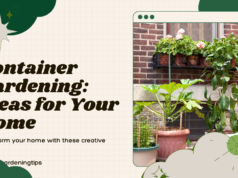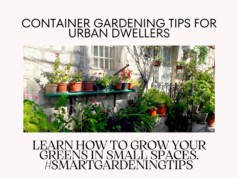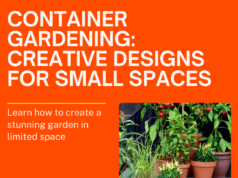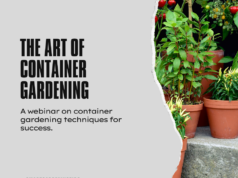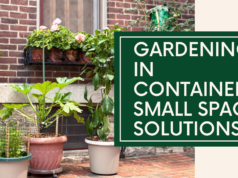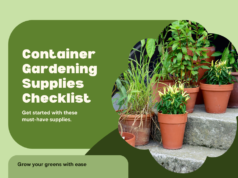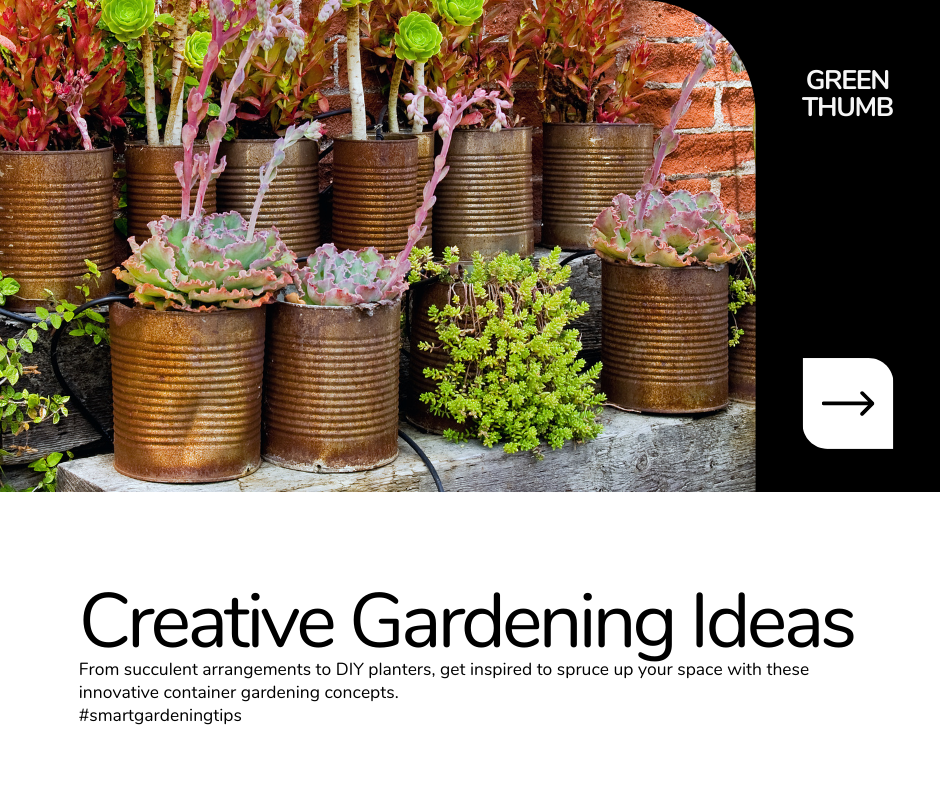
Are you ready to transform your green space into a stunning oasis? Look no further than innovative container gardening concepts that will take your gardening game to new heights. Whether you have a small balcony, a tiny courtyard, or limited outdoor areas, these concepts will maximize the beauty and productivity of your plants.
Container gardening is a versatile and space-saving solution, allowing you to create a lush garden even in the tightest of spaces. With the right techniques and ideas, you can turn any container into a thriving green paradise.
From vertical gardening to upcycled containers and self-watering planters, there are a plethora of options to explore. Each concept offers unique benefits and allows you to unleash your creativity while nurturing your plants.
Not only is container gardening visually appealing, but it is also practical. You can grow a variety of herbs, flowers, and even vegetables right at your fingertips. Imagine the convenience of having fresh produce just steps away from your kitchen!
Whether you are a seasoned gardener or just starting, this article will guide you through the world of container gardening and provide you with the inspiration and knowledge you need to create a thriving green space.
Key Takeaways:
- Discover a range of innovative container gardening concepts
- Learn how to maximize beauty and productivity in limited spaces
- Explore the benefits of vertical gardening and self-watering planters
- Get inspired by creative uses of upcycled containers
- Uncover essential tips for successful indoor container gardening
Vertical Gardening: A Space-Saving Solution

When it comes to urban gardening or making the most of limited spaces, vertical gardening is the way to go. This innovative technique allows you to utilize vertical space, transforming walls, fences, or even balconies into thriving green gardens. In this section, we will explore the overview of vertical container gardening and highlight the numerous benefits it offers.
Vertical Container Gardening Overview
Vertical gardening involves growing plants vertically instead of horizontally. By using containers or specialized structures such as trellises, vertical gardens make use of valuable wall space that would otherwise remain unused. Whether you have a small apartment or a backyard with limited ground space, vertical container gardening provides a practical and aesthetically pleasing solution.
With vertical container gardening, you can grow a variety of plants, including flowers, herbs, vegetables, and even small fruit trees. The possibilities are endless, allowing you to create a vertical oasis that suits your taste and preferences.
Vertical gardens can be designed in various styles, such as hanging gardens, living walls, or stacked container gardens. These designs can be customized to fit any space, from a petite balcony to a spacious backyard. Not only do vertical gardens add beauty to your surroundings, but they also provide a host of benefits.
Benefits of Vertical Gardening
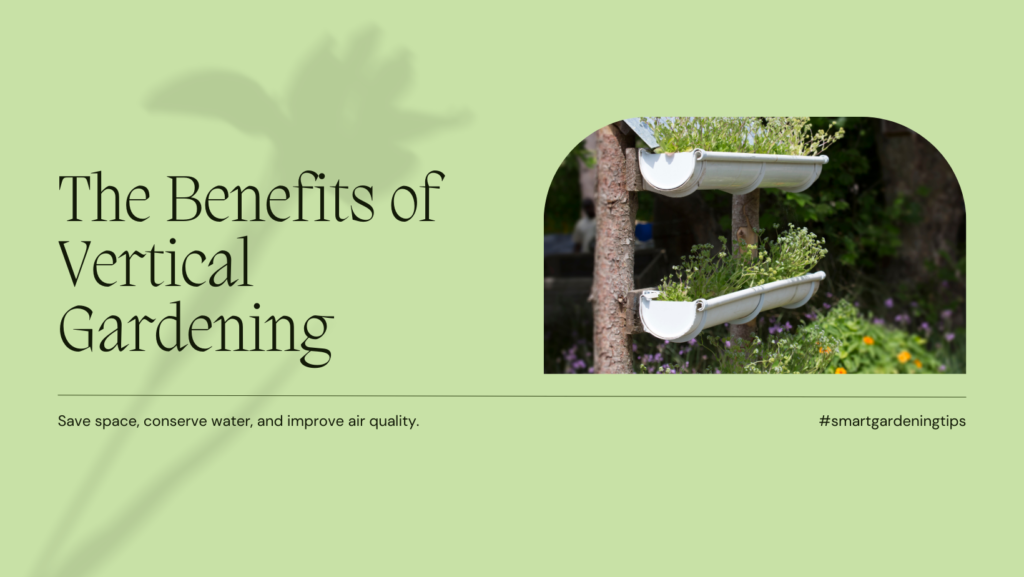
- Space Optimization: As the name suggests, vertical gardening is all about maximizing space. By utilizing vertical structures, you can grow more plants in a smaller area, allowing you to make the most of limited space.
- Enhanced Aesthetic Appeal: Vertical gardens add a touch of natural beauty to any environment. They can serve as stunning focal points, turning plain walls into living, breathing works of art. Whether you prefer lush greenery or colorful blooms, vertical gardening offers endless possibilities for beautifying your space.
- Better Air Quality: Plants have the remarkable ability to improve air quality by removing toxins and releasing oxygen. Vertical gardens help purify the air around you, creating a fresher and healthier environment for you and your loved ones.
- Easy Maintenance: Vertical gardens are generally easier to maintain compared to traditional gardens. With plants growing vertically, tasks such as watering, pruning, and harvesting become more accessible and efficient.
- No More Back Pain: Say goodbye to sore knees and aching backs! Vertical gardening eliminates the need for bending over or kneeling, making it a convenient option for people with physical limitations or mobility issues.
Vertical gardening is a versatile and efficient solution for anyone looking to create a stunning green oasis in even the smallest of spaces. Whether you have a tiny balcony or a wide garden wall, exploring the world of vertical container gardening offers immense possibilities.
Upcycled Containers: Unleashing Creativity
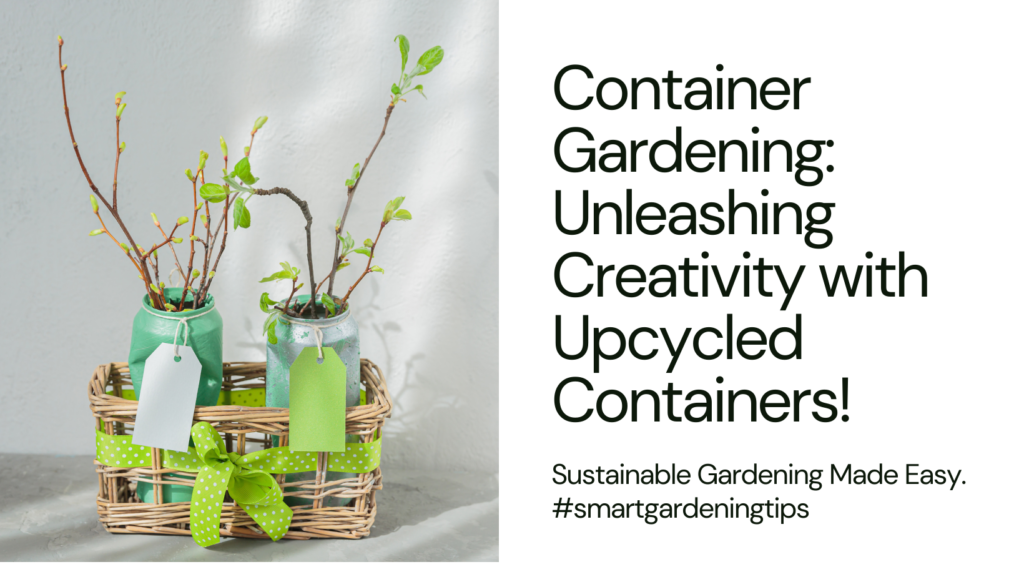
If you’re looking for a sustainable and budget-friendly way to enhance your container gardening experience, upcycled containers are the answer. By repurposing items you already have, you can unleash your creativity and create unique and environmentally-friendly gardening solutions. Not only does upcycling minimize waste, but it also adds an artistic touch to your green space.
There are endless creative uses of upcycled containers for gardening. From using old tin cans as herb planters to transforming wooden crates into raised beds, the possibilities are truly inspiring. These containers not only provide a functional space for your plants to thrive but also add a charming and eclectic aesthetic to your garden.
The Advantages of Upcycled Containers in Container Gardening
Using upcycled containers in your container gardening has several advantages. Firstly, it allows you to repurpose items that would otherwise end up in landfills, reducing waste and promoting sustainability. Secondly, upcycled containers are often more affordable than store-bought alternatives, making gardening accessible to everyone.
Additionally, upcycled containers offer versatility and customization. You can experiment with different shapes, sizes, and materials, allowing you to create a garden that perfectly suits your unique style and needs. Whether you’re repurposing an old teapot as a whimsical planter or using a vintage dresser as a multi-tiered garden display, upcycled containers add character and personality to your outdoor space.
Get Inspired with Creative Uses of Upcycled Containers for Gardening
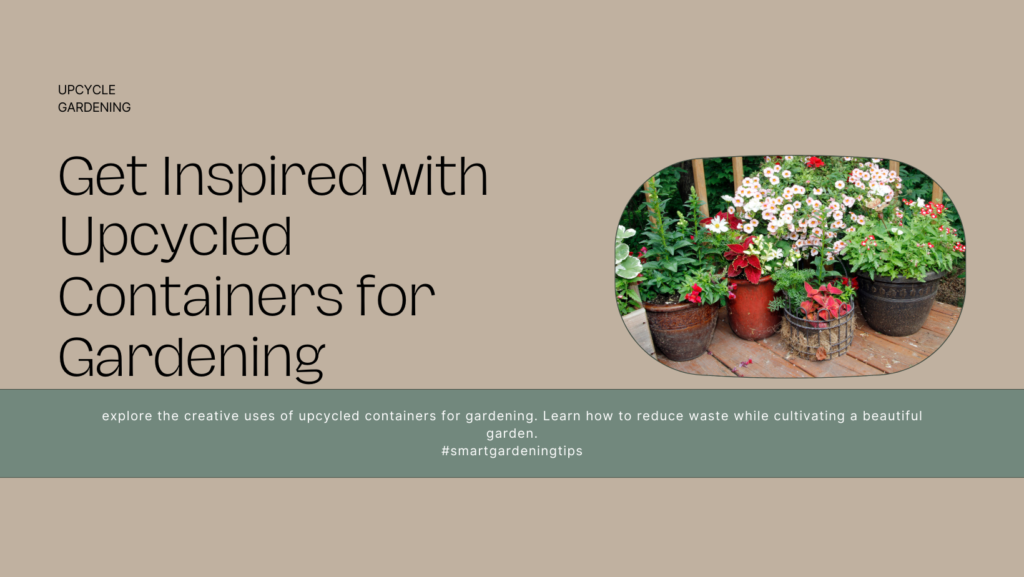
“Gardening requires lots of water – most of it in the form of perspiration.”
— Lou Erickson
To spark your imagination, here are some creative ideas for upcycled containers:
- Transform old mason jars into hanging planters for trailing plants, such as ivy or spider plants.
- Convert plastic bottles into self-watering planters by cutting them in half and placing the top part inverted into the bottom half, creating a reservoir for water.
- Repurpose vintage suitcases as mobile herb gardens by filling them with soil and planting your favorite herbs.
- Reimagine old drawers as rustic planters by adding drainage holes and filling them with vibrant flowers or succulents.
- Reuse old tires as sturdy raised beds for growing vegetables or creating a unique vertical garden.
Embrace your creativity and let your green thumb flourish by incorporating upcycled containers into your container gardening. Not only will you be reducing waste and saving money, but you’ll also be adding a touch of artistic flair to your outdoor oasis.
| Advantages of Upcycled Containers in Container Gardening |
|---|
| Reduces waste by repurposing items |
| Cost-effective alternative to store-bought containers |
| Customizable and unique designs |
| Promotes sustainability and eco-conscious gardening |
Exploring Self-Watering Planters
In your journey towards successful container gardening, exploring self-watering planters can significantly simplify your watering routine and boost the health of your plants. These innovative planters are designed to provide a convenient and efficient way to keep your plants hydrated without constant monitoring and manual watering.
Wondering how self-watering planters work? The concept is ingeniously simple:
- The self-watering planter consists of two main components: a water reservoir located at the bottom and a growing container on top.
- The water reservoir is filled through a designated opening, allowing water to be stored within the planter.
- A wicking system, usually in the form of capillary mats or wicks, draws water from the reservoir and delivers it to the plant’s roots as needed.
- Excess water is collected in a drainage layer at the bottom of the planter, preventing waterlogged roots and potential damage.
With self-watering planters, you can say goodbye to the guesswork involved in watering. These planters provide a consistent water supply to your plants, ensuring they receive the right amount of moisture without the risk of over- or under-watering.
Top Self-Watering Planter Options for Container Gardening
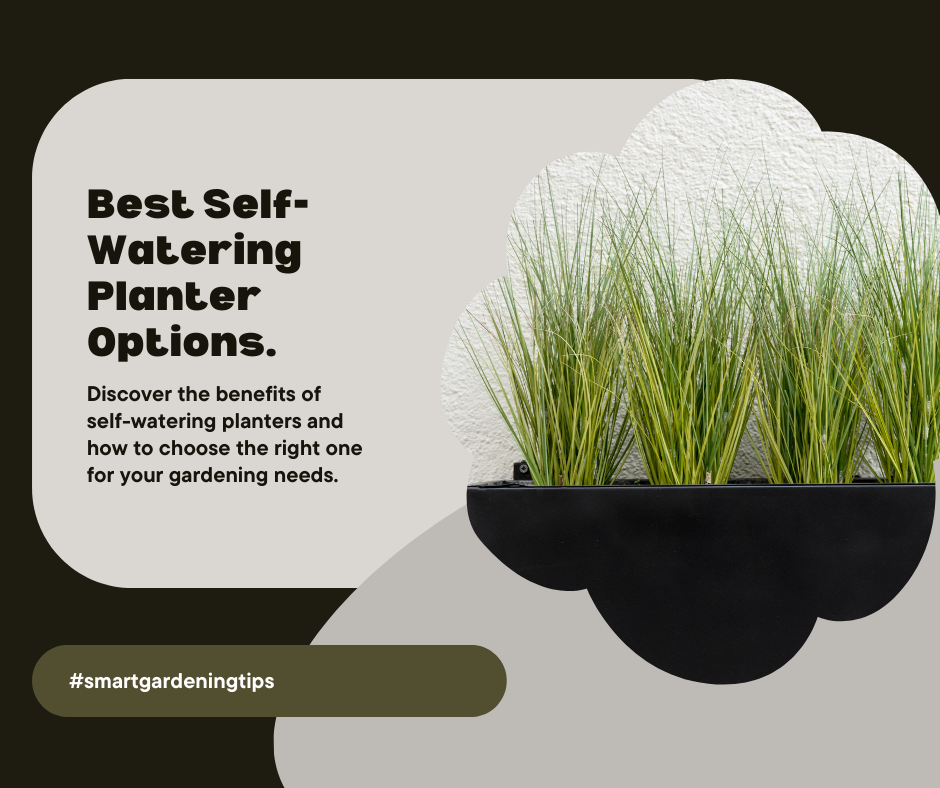
When it comes to selecting self-watering planters for your container garden, there are various options available to suit your style and preferences. Here are some top choices to consider:
| Planter | Description | Image |
|---|---|---|
| 1. Lechuza Cubico Color | A sleek and modern planter with a built-in water reservoir and a convenient water level indicator. | |
| 2. EarthBox | An easy-to-use self-watering planter that is ideal for growing a variety of vegetables and herbs. | |
| 3. Mayne Fairfield Patio Planter | A stylish and durable self-watering planter available in multiple sizes and colors. |
These are just a few examples of the top self-watering planters on the market. Each offers its unique features and benefits to enhance your container gardening experience. Consider factors such as size, design, and material when choosing a planter that suits your gardening needs and complements your outdoor or indoor space.
With self-watering planters, you can save time and ensure your plants receive consistent watering, even during periods of absence or busy schedules. Explore the options available, and choose the self-watering planter that fits your container gardening goals.
Indoor Container Gardening Essentials
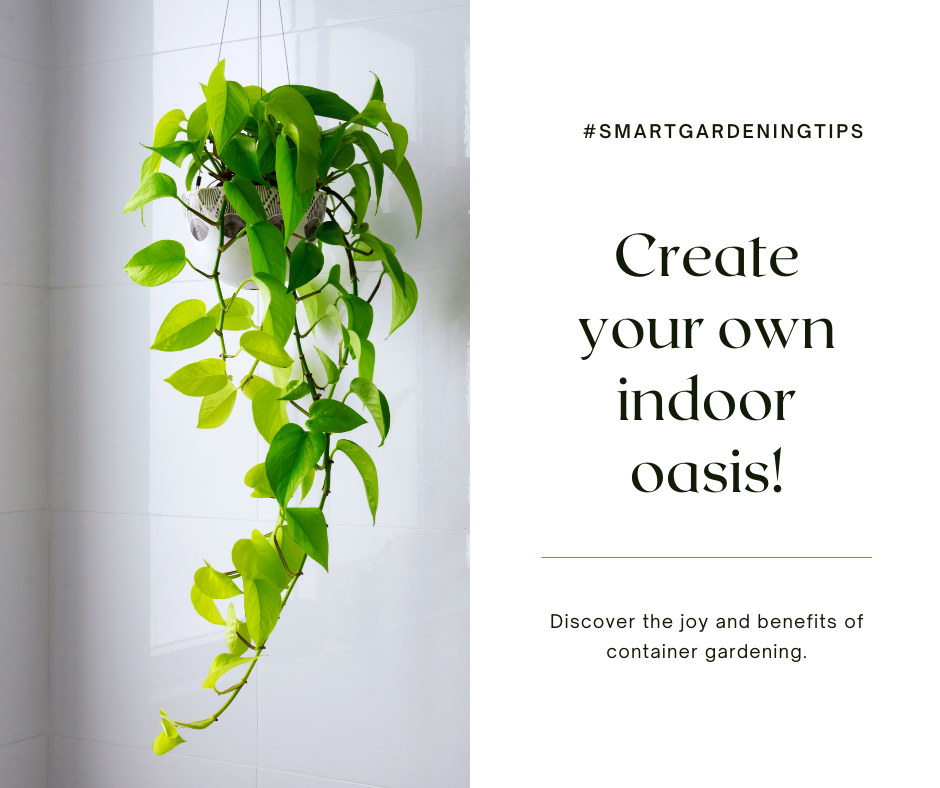
Indoor container gardening is an excellent way to bring nature into your home and create a vibrant green space. Whether you have a spacious home or a compact apartment, you can enjoy the benefits of gardening indoors. To help you get started and create a thriving indoor garden, here are some essential tips and recommendations:
- Choose the right plants: Selecting the right plants is crucial for successful indoor container gardening. Look for plants that thrive in low-light conditions and can adapt well to the indoor environment. Some popular options include:
- Snake Plant
- Pothos
- Spider Plant
- Peace Lily
These plants are easy to care for and can enhance the air quality in your home. Provide adequate lighting: While some indoor plants can tolerate low-light conditions, most of them still require sufficient lighting to grow well. Place your plants near a window where they can receive indirect sunlight. If natural light is limited, consider using artificial grow lights to provide the necessary light spectrum. Choose the right containers: Opt for containers that have drainage holes to prevent waterlogging and root rot. Porous containers made of materials like terracotta are ideal for indoor gardening as they allow excess water to evaporate. Make sure the containers are the right size for your plants, allowing room for root growth. Use high-quality potting soil: Good potting soil is essential for healthy plant growth. Look for a well-draining mix that contains a good balance of organic matter, perlite, and vermiculite. Avoid using regular garden soil, as it may compact and hinder root development. Establish a watering routine: Water your indoor plants regularly, but be careful not to overwater. Most indoor plants prefer slightly moist soil, so allow the top inch of soil to dry out before watering again. Use your finger to test the soil’s moisture level before watering.
Remember, each plant has its own unique watering requirements, so it’s important to research and understand the specific needs of your plants.
Maintaining Humidity
Indoor environments tend to have lower humidity levels, which can be challenging for some plants. To maintain adequate humidity for your indoor garden, you can follow these tips:
- Group plants together to create a microclimate with increased humidity.
- Place a tray filled with water near your plants to create moisture through evaporation.
- Mist your plants regularly using a spray bottle to increase humidity around them.
- Invest in a small humidifier to regulate the humidity levels in your space.
By following these essential tips and taking good care of your indoor plants, you can create a lush and thriving indoor garden that brings beauty and serenity into your home.
| Plant | Light Requirements | Watering Frequency | Special Care |
|---|---|---|---|
| Snake Plant | Low to medium light | Allow soil to dry between waterings | Avoid overwatering |
| Pothos | Low to medium light | Water thoroughly once the top inch of soil has dried out | Prune regularly to maintain bushy growth |
| Spider Plant | Medium to bright indirect light | Water when the top inch of soil feels dry | Produces baby spider plants (offshoots) that can be propagated |
| Peace Lily | Low to medium light | Water when the top inch of soil feels dry | Produces elegant white flowers |
Raised Bed Containers: A Great Gardening Hack
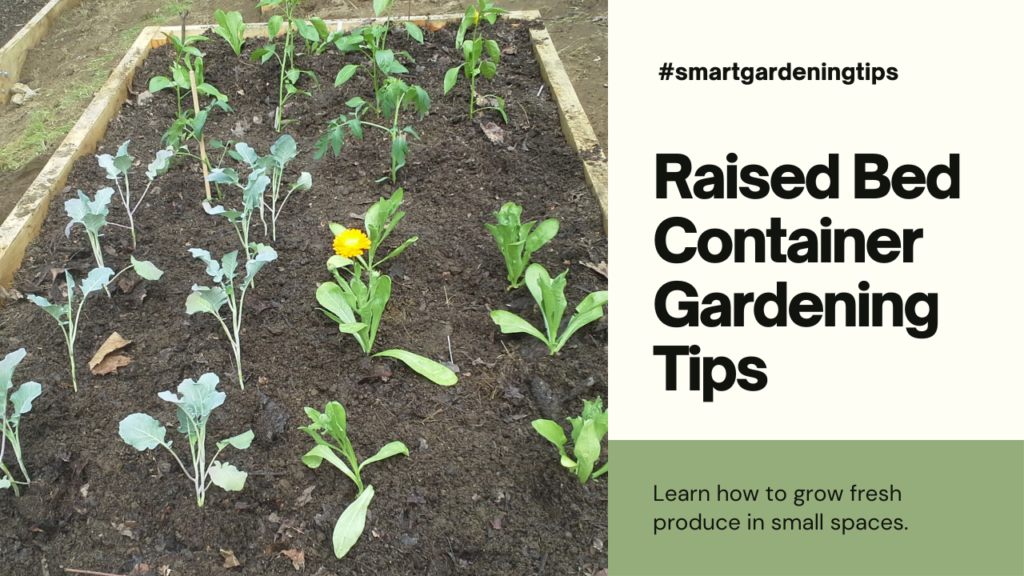
If you’re looking to take your gardening game to the next level, raised bed containers are an excellent option to consider. These innovative gardening hacks offer a host of advantages that can transform your gardening experience. Whether you have limited space or want to improve your plant’s health and productivity, raised bed containers can be a game-changer.
Advantages of Raised Bed Containers in Gardening
One of the key advantages of raised bed containers is their ability to provide better soil drainage. The elevated design allows excess water to flow freely, preventing waterlogging and root rot. Additionally, raised bed containers offer improved soil aeration, which promotes healthier root growth and overall plant vigor. The loose, well-drained soil in these containers also minimizes weed growth, making it easier to maintain a neat and tidy garden.
Another notable advantage of raised bed containers is their versatility. These containers can be placed in various locations, including patios, balconies, and even rooftops, making them ideal for urban gardening. They also provide excellent protection against pests, as the elevated design deters ground-dwelling insects and critters from accessing your delicate plants.
Using raised bed containers has revolutionized my gardening experience. Not only do they add an aesthetic appeal to my small balcony, but the improved drainage and soil quality have resulted in healthier, thriving plants. I highly recommend giving raised bed container gardening a try!
Raised Bed Container Gardening Tips
To make the most of your raised bed container gardening, here are a few tips to keep in mind:
- Choose the right container: Opt for containers made from durable materials such as wood or plastic. Ensure they have adequate depth to accommodate the root systems of your chosen plants.
- Use quality soil: Fill your raised bed containers with a nutrient-rich potting mix or a blend of compost, peat moss, and perlite. This will provide your plants with the necessary nutrients for healthy growth.
- Water properly: Keep a close eye on the moisture levels in your raised bed containers. While the improved drainage helps prevent waterlogging, it’s essential to water regularly, especially during hot and dry periods.
- Plan your garden layout: Consider the sunlight requirements of your plants and arrange them accordingly within your raised bed containers. This will ensure each plant receives the appropriate amount of light for optimal growth.
With these tips in mind, you’ll be on your way to creating a lush and thriving garden using raised bed containers.
As you can see, raised bed containers offer numerous advantages and can elevate your gardening experience to new heights. Their versatility, improved drainage, and customizable design make them an excellent choice for both novice and experienced gardeners. By implementing these tips, you’ll be well on your way to creating a vibrant and productive garden in no time.
Maximizing Beauty and Productivity
When it comes to container gardening, maximizing the beauty and productivity of your green space is key. By implementing a few simple techniques and strategies, you can create a vibrant and flourishing container garden that will impress both yourself and your guests.
One effective strategy is to carefully select the right plants for your containers. Consider the amount of sunlight your space receives and choose plants that thrive in those conditions. Additionally, pay attention to the size and growth habits of your chosen plants to ensure they have enough room to spread out and develop. This thoughtful selection process will result in a visually appealing and harmonious container garden.
Companion Planting for Optimal Results
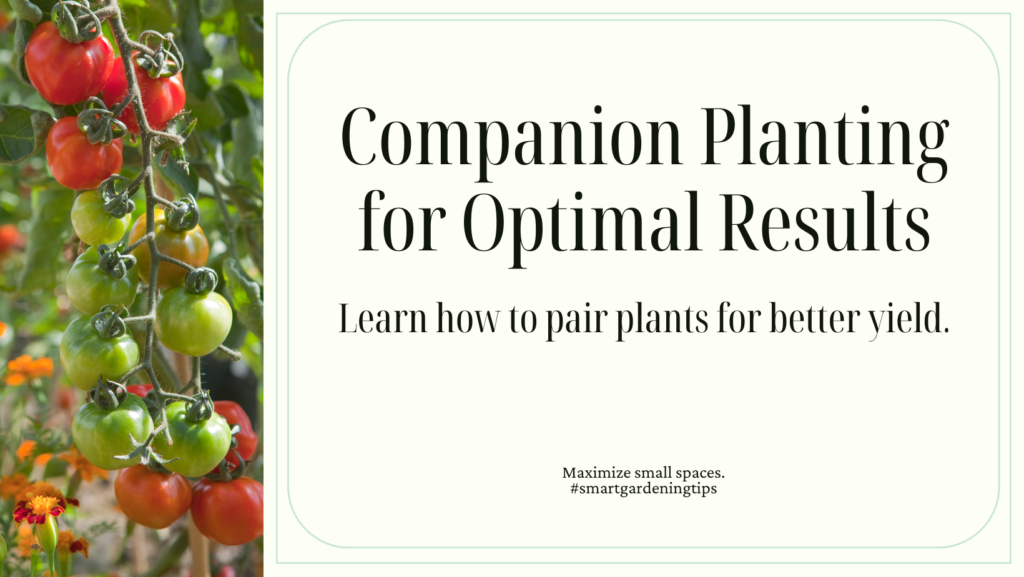
Another way to maximize the productivity of your container garden is through companion planting. Companion planting involves strategically pairing plants that benefit each other in some way, such as preventing pests or enhancing nutrient absorption. For example, planting marigolds alongside your vegetables can help deter harmful insects and improve overall plant health.
Take the time to research which plants work well together and incorporate them into your container garden design. Not only will this practice increase your yield, but it will also add visual interest and diversity to your space.
“Companion planting involves strategically pairing plants that benefit each other in some way, such as preventing pests or enhancing nutrient absorption.”
The Importance of Proper Watering and Feeding
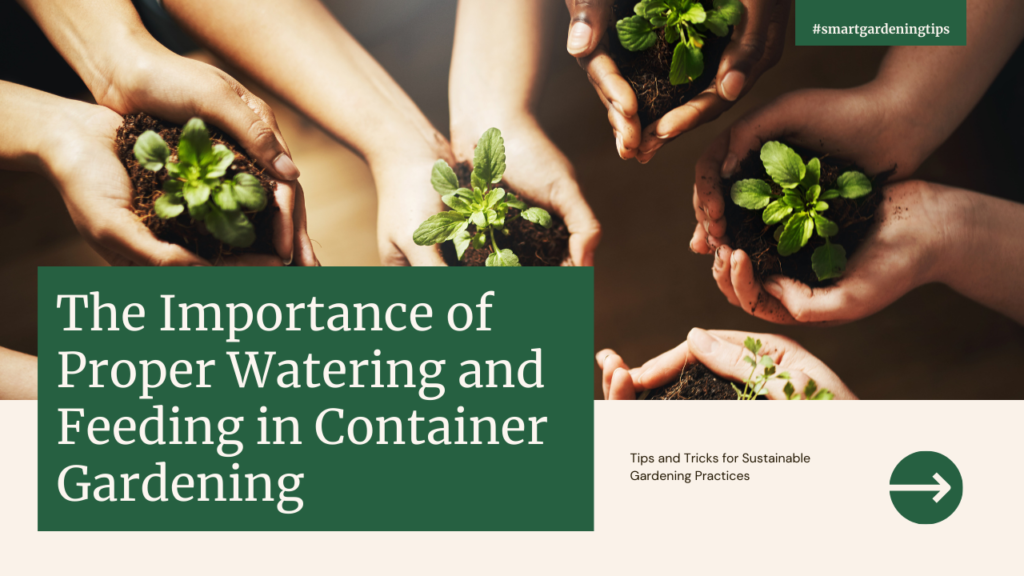
To truly maximize the beauty and productivity of your container garden, proper watering and feeding are essential. Different plants have varying water and nutrient requirements, so it’s important to understand the specific needs of each plant in your containers.
Regular watering is crucial, but overwatering can lead to root rot and other issues. Monitor the moisture levels of your containers and adjust your watering schedule accordingly. Additionally, consider using a high-quality slow-release fertilizer or incorporating organic compost into your potting mix to provide essential nutrients to your plants.
Regular Maintenance for Long-Term Success
Creating a stunning and productive container garden requires consistent care and maintenance. Regularly inspect your plants for signs of pests, diseases, or nutrient deficiencies. Remove any damaged or diseased foliage promptly to promote overall plant health.
Pruning and deadheading spent blooms will encourage continuous flowering and stimulate new growth. This will not only enhance the beauty of your container garden but also contribute to its long-term productivity.
The Joy of Container Gardening
Container gardening offers a unique opportunity to create a personalized and captivating green space, even in the smallest of areas. By implementing the techniques mentioned above and being attentive to the needs of your plants, you can maximize the beauty and productivity of your container garden, bringing joy and satisfaction to your gardening endeavors.
| Benefit | Description |
|---|---|
| Enhanced Aesthetics | A well-designed container garden adds beauty and visual appeal to any space, whether it’s a balcony, patio, or rooftop. |
| Year-Round Gardening | Container gardening allows for year-round gardening, regardless of the climate or limited outdoor space. |
| Accessibility | Containers can be placed at a height that is comfortable for you, reducing the strain on your back and knees. |
| Easy Maintenance | Container gardens require less weeding and are easier to maintain compared to traditional in-ground gardens. |
Embracing Sustainable Container Gardening Practices
When it comes to container gardening, embracing sustainable practices not only benefits your plants but also contributes to a healthier environment. By incorporating eco-friendly approaches into your routine, you can create a thriving and mindful green space that’s in harmony with nature.
One of the key principles of sustainable container gardening is reducing waste. Instead of purchasing new containers, consider reusing and upcycling materials. This not only saves money but also reduces the demand for new resources. Upcycled containers, such as old buckets or repurposed crates, can add a unique touch to your garden while minimizing your ecological footprint.
“Sustainable container gardening involves taking a holistic approach to cultivate plants in an eco-friendly manner.”
Avoiding harmful chemicals is another important aspect of sustainable container gardening. Opt for organic fertilizers and pest control methods whenever possible. By using natural alternatives, you’ll protect the environment, promote biodiversity, and ensure the health of your plants.
Water conservation is crucial in sustainable gardening. Consider implementing a self-watering system or using moisture-retaining additives in your soil. This will not only help conserve water but also prevent overwatering, which can lead to root rot and other plant health issues.
Benefits of Sustainable Container Gardening:
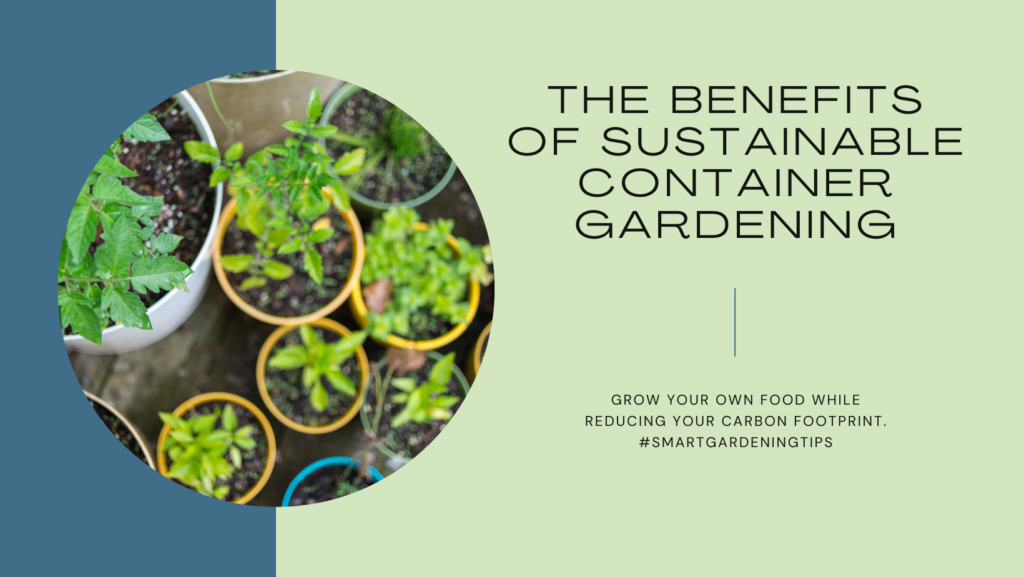
- Minimizes waste and reduces the demand for new resources.
- Promotes biodiversity by avoiding harmful chemicals.
- Conserves water through efficient watering techniques.
- Creates a healthier and more vibrant garden ecosystem.
By embracing sustainable practices in your container gardening, you not only contribute to a greener planet but also create a more harmonious and rewarding gardening experience. Remember, every small step towards sustainability makes a big difference in preserving our natural resources for future generations.
FAQ
Q. What is container gardening?
A. Container gardening is a method of planting and growing plants in containers, such as pots, containers, or even upcycled objects, instead of planting them directly in the ground. It is a versatile gardening approach that allows individuals to create beautiful and productive gardens, even in limited spaces.
Q. What are the benefits of vertical gardening?
A. Vertical gardening is a space-saving solution that maximizes the use of vertical space, allowing you to grow plants upwards. It is particularly beneficial in small gardens or urban areas with limited space. Vertical gardening can help save space, increase growing capacity, improve accessibility, and add visual interest to your garden.
Q. How can I use upcycled containers for gardening?
A. Upcycled containers offer a creative and sustainable way to grow plants. You can repurpose various objects, such as old buckets, tin cans, or even shoes, as unique planters. Upcycled containers bring charm and personality to your garden while reducing waste. They are cost-effective and can be customized to suit your individual style.
Q. How do self-watering planters work?
A. Self-watering planters have a reservoir that holds water. These planters are designed with a wicking system, which allows the plant roots to draw water from the reservoir as needed. The wick absorbs water and delivers it to the roots, ensuring consistent moisture levels. This reduces the risk of overwatering or underwatering your plants, making it an efficient and convenient option for container gardening.
Q. What are some top self-watering planter options for container gardening?
A. Some popular self-watering planter options include the EarthBox Garden Kit, Lechuza Self-Watering Planters, and the Algreen Self-Watering Planter. These planters offer various sizes and styles to suit different plants and aesthetics. It’s important to choose a self-watering planter that matches your gardening needs and preferences.
Q. What are the essentials for successful indoor container gardening?
A. To have successful indoor container gardening, you need to consider the proper lighting, temperature, and humidity levels for your plants. It’s essential to choose suitable indoor plants that thrive in the conditions of your home. Adequate drainage, proper watering, and regular fertilization are also crucial for maintaining healthy plants indoors.
Q. What are the advantages of raised bed containers in gardening?
A. Raised bed containers offer several advantages in gardening. They provide better drainage, improve soil quality, and reduce weed growth. Raised beds also make it easier to control pests and diseases, as well as provide a more comfortable working height for planting and maintenance. Additionally, raised bed containers can extend the growing season and allow for better root development.
Q. How can I maximize the beauty and productivity of my container garden?
A. To maximize the beauty and productivity of your container garden, consider the following tips: – Choose a variety of plants with different heights, colors, and textures for visual interest. – Ensure proper watering and fertilization based on each plant’s needs. – Regularly prune and deadhead plants to promote growth and blooming. – Harvest vegetables and herbs at the right time to encourage continuous production. – Use trellises or stakes to support climbing plants and optimize garden space. – Rotate plants or rearrange containers periodically to prevent overcrowding and maximize sunlight exposure.
Q. How can I incorporate sustainable practices into my container gardening routine?
A. You can embrace sustainable container gardening practices by: – Using organic soil mixes and natural fertilizers to minimize chemical use. – Collecting and utilizing rainwater for watering your plants. – Composting kitchen scraps and incorporating the compost into your container soil. – Choosing native or drought-tolerant plant varieties to conserve water. – Recycling or upcycling containers and materials to reduce waste. – Attracting beneficial insects and pollinators to your garden through planting native flowers and providing habitats. – Being mindful of energy consumption by using energy-efficient lighting for indoor container gardening.
Conclusion
Creating a beautiful and productive green space is within your reach, regardless of limited spaces. By implementing the innovative container gardening concepts discussed in this article, you can transform your outdoor or indoor area into a vibrant oasis.
Vertical gardening offers a space-saving solution that maximizes the use of vertical space, while upcycled containers unleash creativity and add a unique touch to your garden. Explore the convenience of self-watering planters and the benefits of utilizing raised bed containers.
Remember, maximizing beauty and productivity in your container garden requires careful planning and the right techniques. Incorporate sustainable practices to ensure a mindful approach to gardening and protect the environment. With these ideas and techniques in your gardening toolbox, start creating your dream green space today. Happy gardening!


